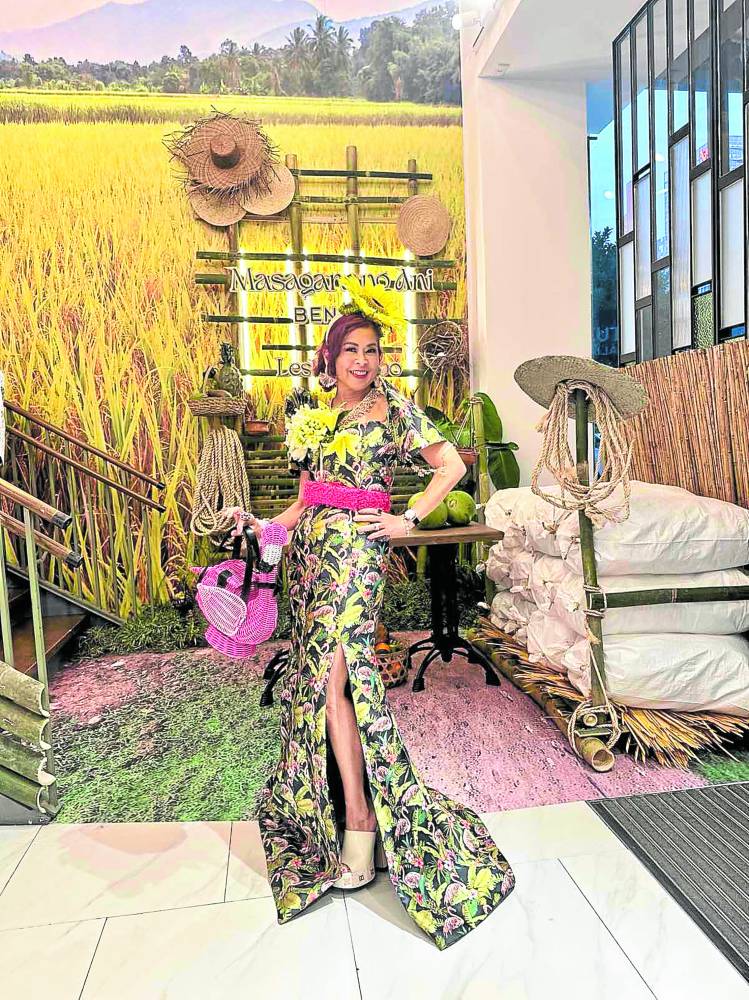“The painting’s gone,” laments the youngest of dad’s nine brothers, Alfredo “Ding” Roces, a painter in his own right, now settled in Sydney, Australia.
The painting that was lost to him and in a way, to me, wasn’t lola’s portrait by Fernando Amorsolo, which I loved and he still keeps—he either won it in the family raffle among the heirs after lola’s passing or got it as bequest from lola herself.
The lost one, about which I myself became curious, was surrounded by history. Lolo, who had died a decade earlier than lola, had come to the painting as a fourth owner. I have found out that it was my dad who won it in the family raffle but that he turned around and made a deal with his brother Anding, exchanging it for cash or something. Not exactly the art lover or connoisseur, dad, as always, must have decided to be practical.
I’ve also learned that Tito Anding took the trouble of taking the painting to Spain for some restoration. His own academic, writerly and artistic bent—he was an education secretary—should explain his interest in it. Apparently, the painting, an oil, had been given to lolo unframed and folded in three places, where marks had been left that needed fixing. In any case, the painting rightfully landed among Tito Anding’s collection, an extensive one.
“Had I been around and aware, when lola died, about the painting being included in the division of inheritance, I would have made some effort to acquire it,” Ding said.
Where budget outruns taste
According to Ding in his family book “Looking for Liling,” from which much of this column derives, the painting, depicting the ancestral home at 23 Calle Anloague in Binondo, was commissioned in 1864. It was done in the Letras y Figuras genre of the time, toward the second half of the 19th century, which was especially popular with the new wealthy class of mestizos, who ordered up such paintings, their own ostentatious way of showcasing their possessions.
On each home painting was emblazoned, as an integral part of it, the name of the homeowner, in this case, Balvino Mauricio. He passed the painting to son Evaristo, who, in turn, gave it lolo, who had taken the time in special friendship to visit his tio in Hong Kong a few times, in the 1950s.
And here’s where history lay: José Rizal had visited the house and portrayed it as Kapitan Tiago’s house, also on Calle Anloague in his “Noli Me Tangere” as a specimen of the style of a nouveau riche, in which budget outruns taste.
Balbino—misspelled in the painting with a “v”—Mauricio was the brother-in-law of the first Alejandro Roces to come to the Philippines, from Asturias, Spain. Alejandro clearly has been a favorite name in the family—every branch seems to have had at least one. According to family lore, it was the name of a beloved and very popular archbishop, a Roces, a favorite uncle of the clan, from Gijon, Asturias, where it traces its roots.
Shortcut to wealth
Alejandro, without discounting romance, was afforded a shortcut to wealth by marrying Severa Mauricio, Balbino’s sister. Balbino Mauricio was already a rich lawyer before becoming a rich businessman. Indeed, the Mauricios were an affluent family. They may have thought Alejandro, the full-blooded Spaniard that he was, provided what they felt they lacked—prestige.
The marriage produced a son, Alejandro Junior, who would inherit the Mauricio fortune, including the house, upon the death of his own father and his uncle’s exile to the Marianas after being convicted of complicity in the Cavite mutiny in 1872, for which the three priests Gomez, Burgos and Zamora were also martyred. Balbino would eventually find his way to Hong Kong, where he remained until his death.
Meanwhile, Alejandro Junior would marry the daughter of a Spaniard and a Manileña, Filomena Gonzales, and from their union would be born 11 children of which only seven children survived. The sixth would be my grandfather, Rafael, who would survive them all.
Filipino masters
I remember the dark and heavy painting. It was by Jose Lozano. It hung in a prominent place in my grandparents’ home postwar on Park Avenue, Pasay City, among the works of Filipino masters Fernando Amorsolo and Resurreccion Hidalgo. That’s where I should have ogled it to my heart’s content.
“Lolo had a magnificent collection of art as well as photographs, books and antiques,” Ding remembers.
Lolo certainly had enough to distribute among his heirs, even after some of them had been lost in the fire that struck the home of the Artiaga family, friends and neighbor in whose capacious bodega the paintings had been parked, for safekeeping—the Artiagas had no reason to invite Japanese suspicions, unlike our family, all of whose sons of age were guerillas.
The Mauricio painting definitely will survive on, but where it will finally be hung is a matter of speculation.
I myself believe art collections, especially works by Filipino masters, belong in museums for all to enjoy; otherwise, one by one, they will just end up in auction houses and eventually in private homes for limited viewing.
Possessions come and go, but there are some like the Letras y Figuras of Balbino Mauricio, with a special historical and family value. And to think dad won it!
As Ding himself said, “ . . . one cannot hold on to anything material in this world.”












































